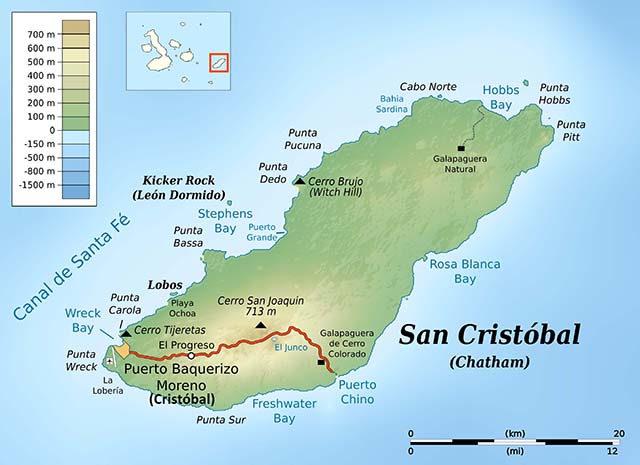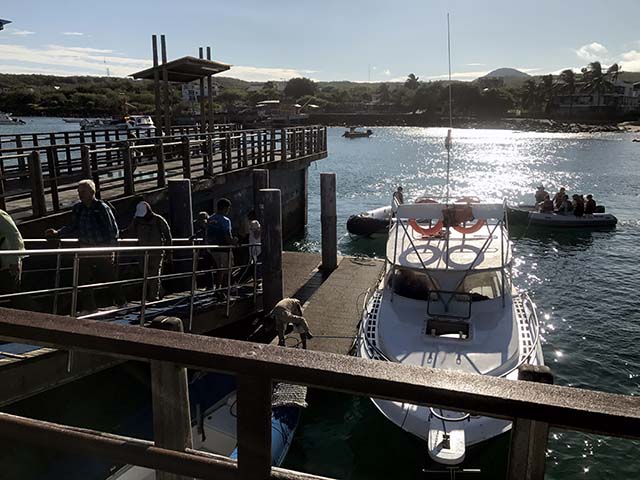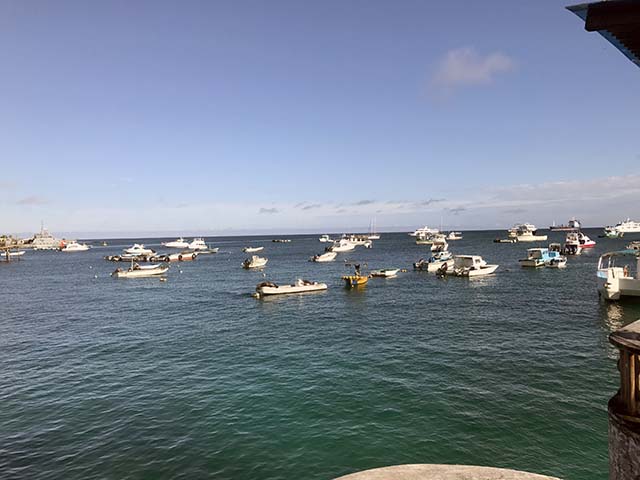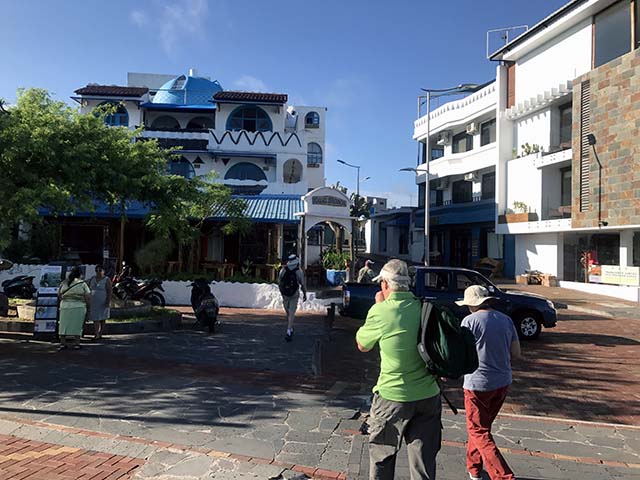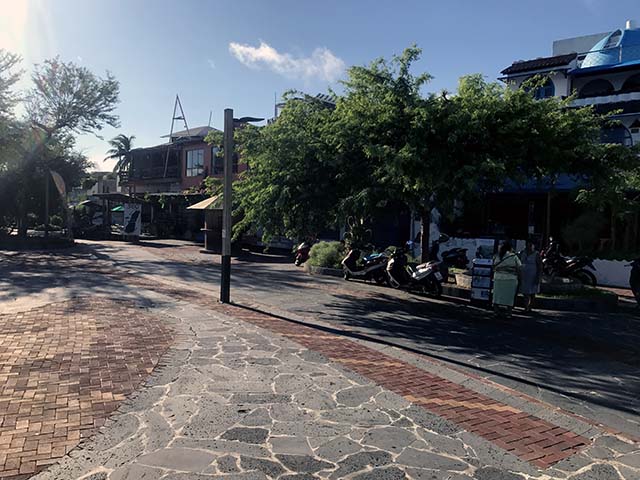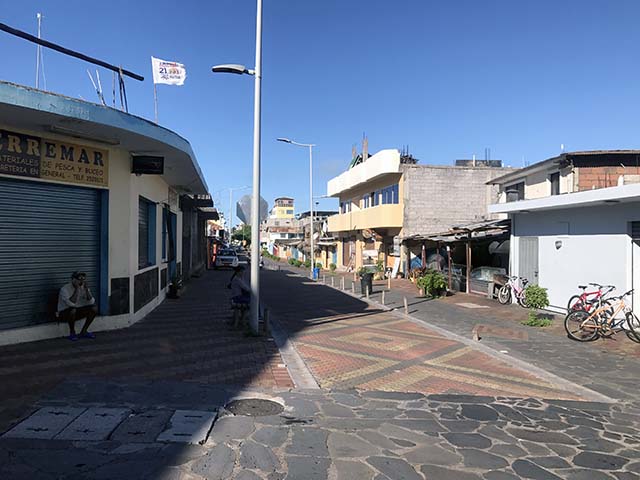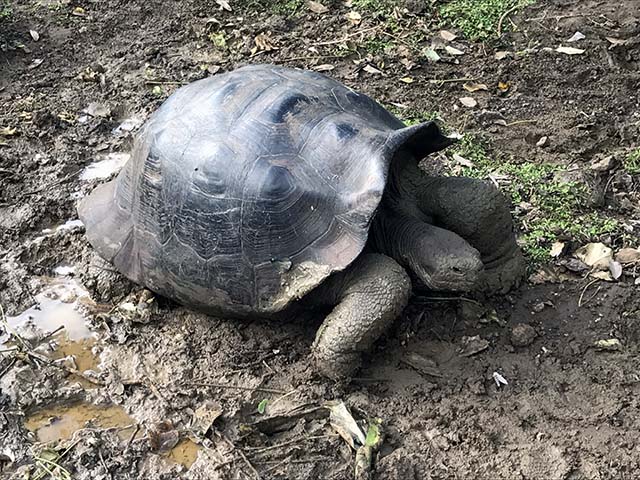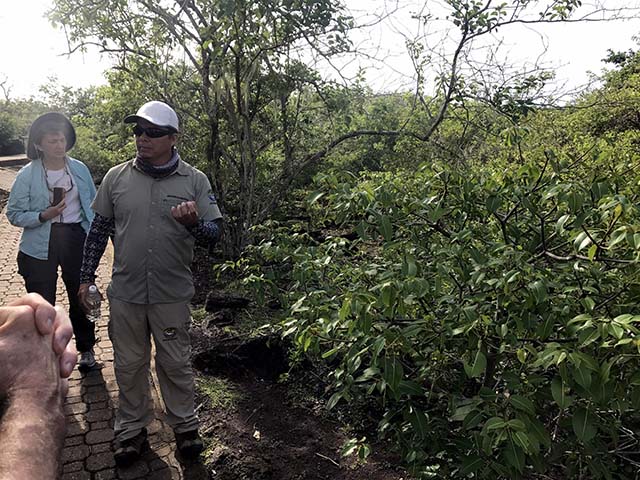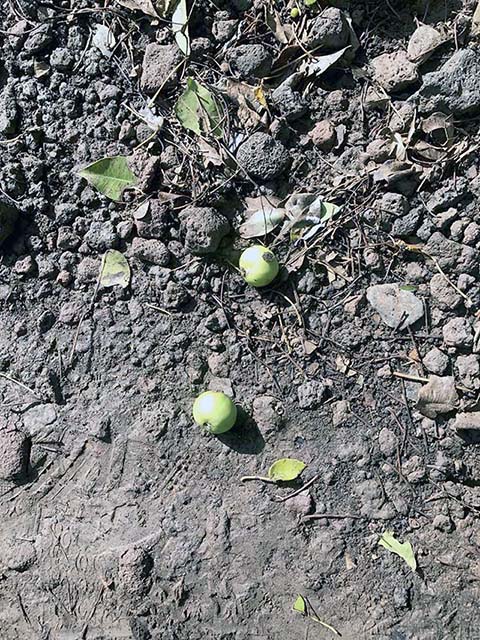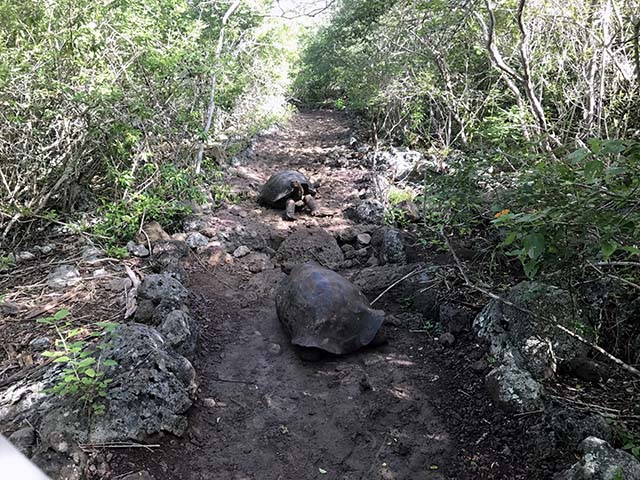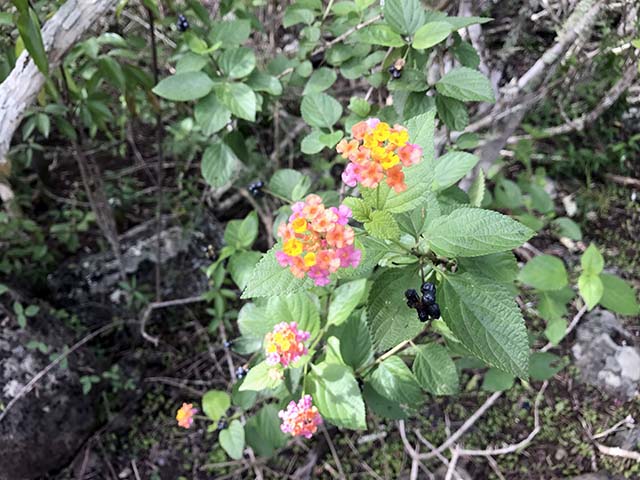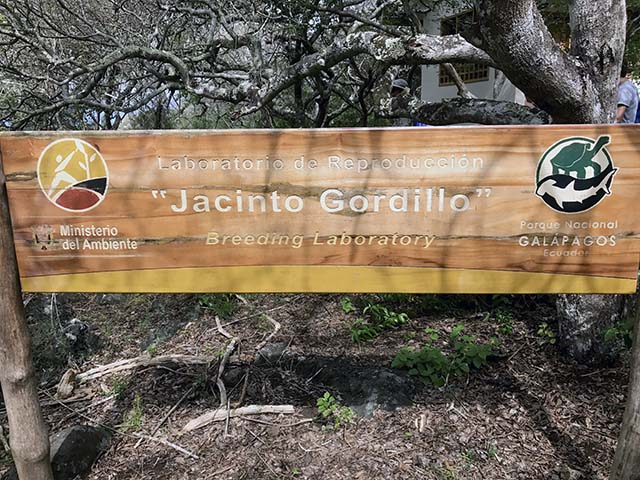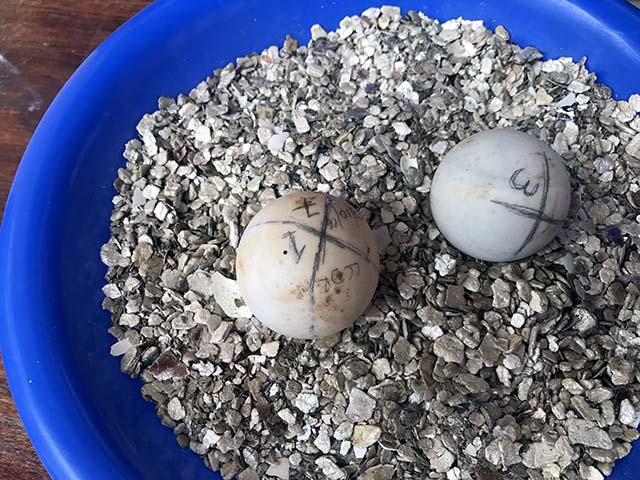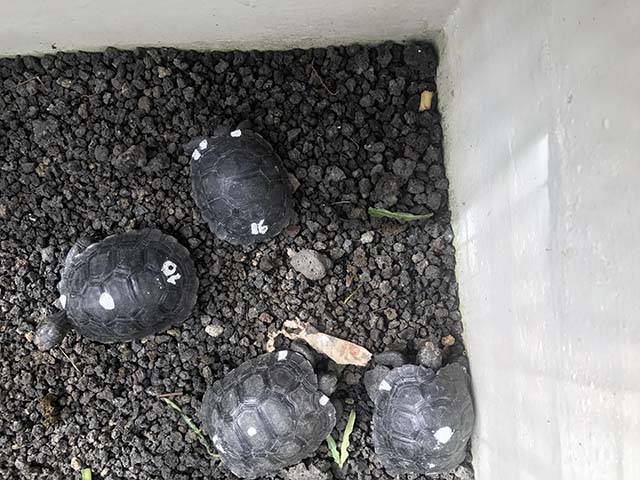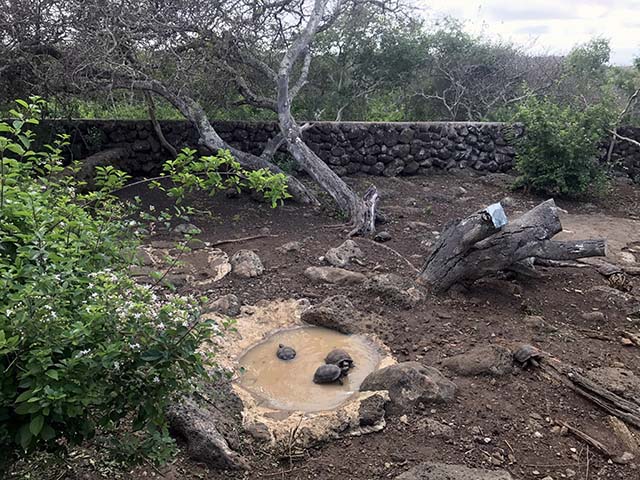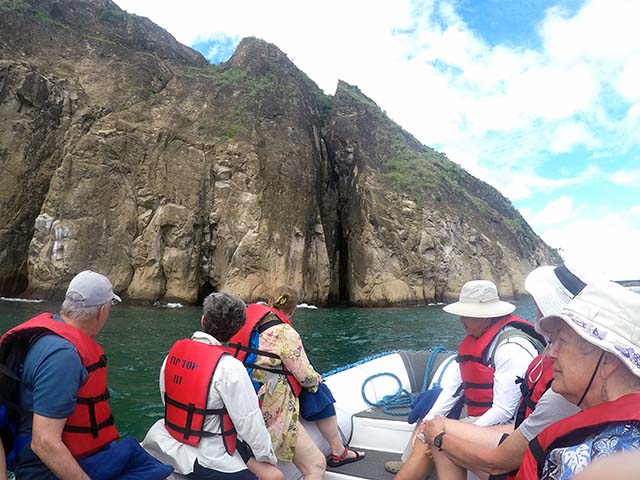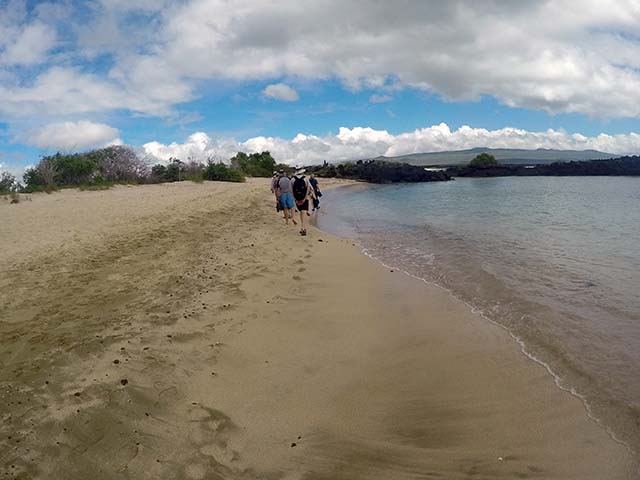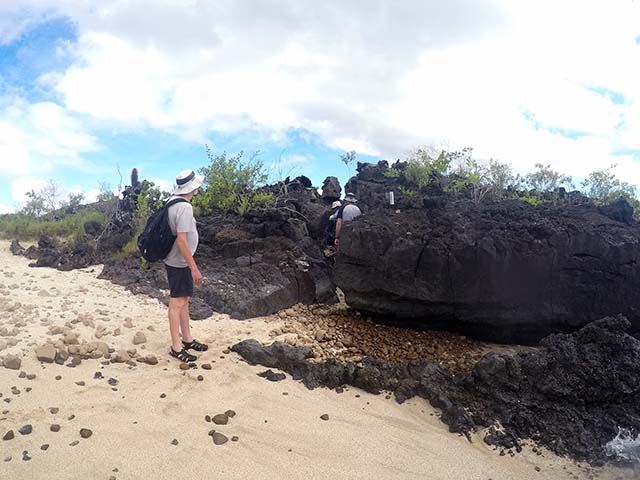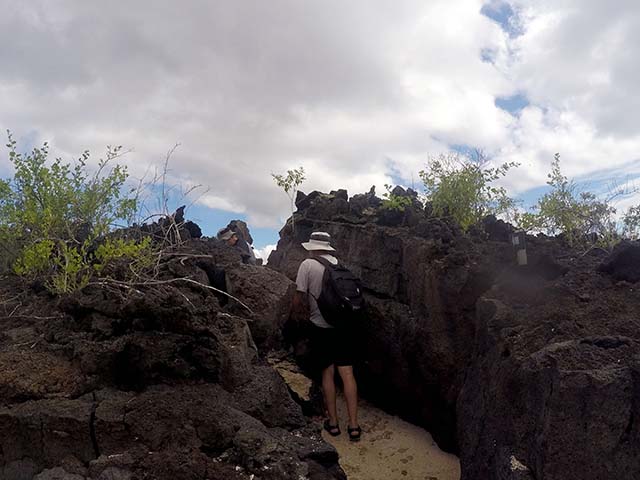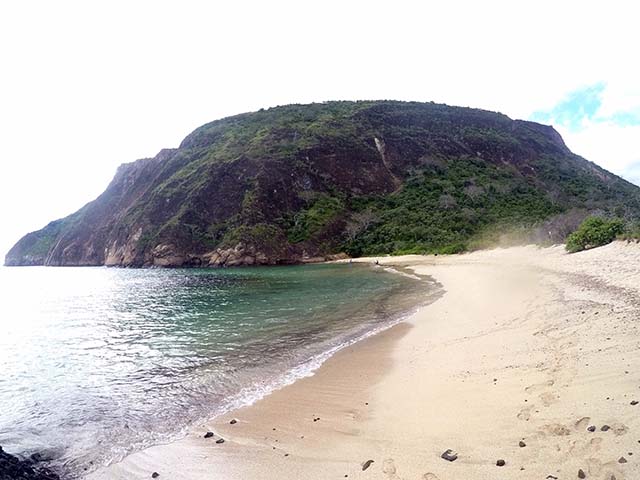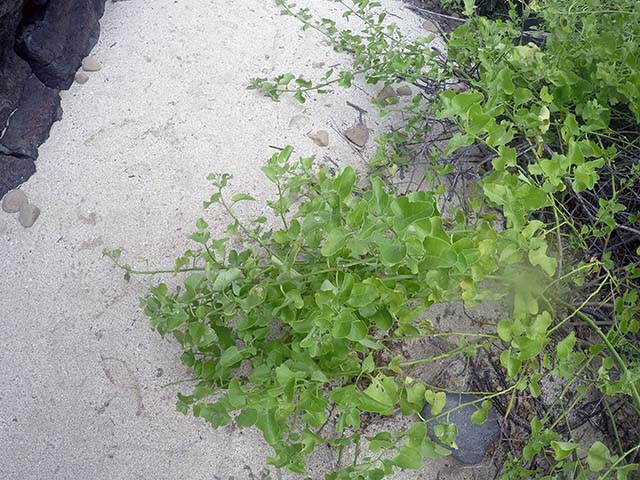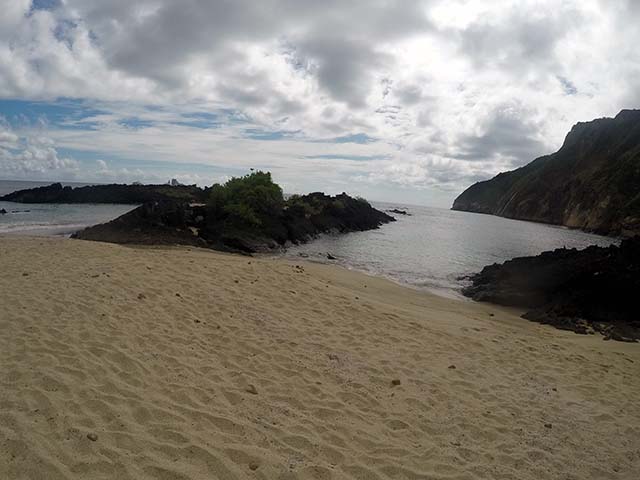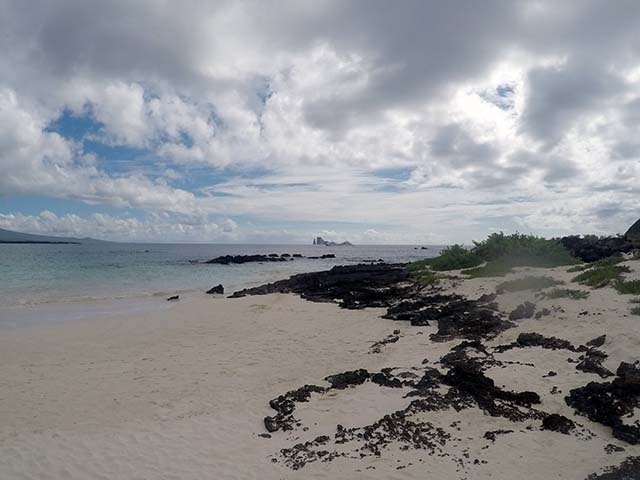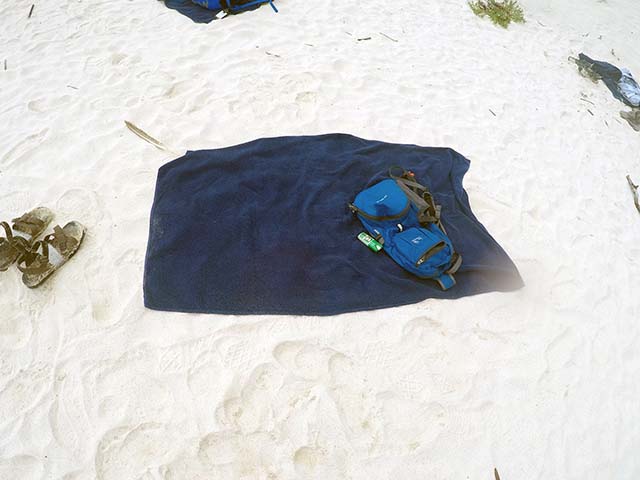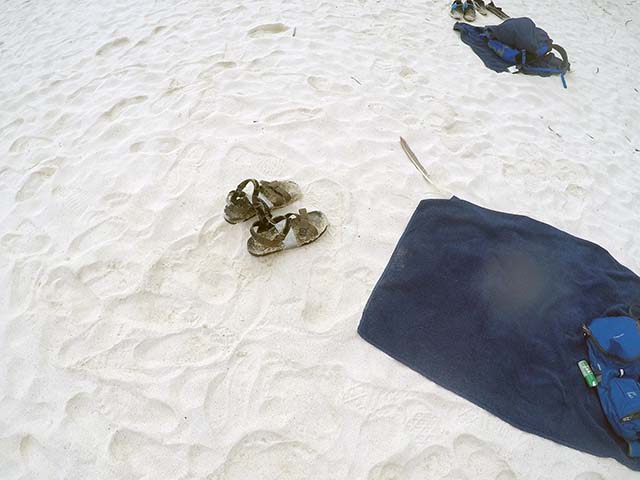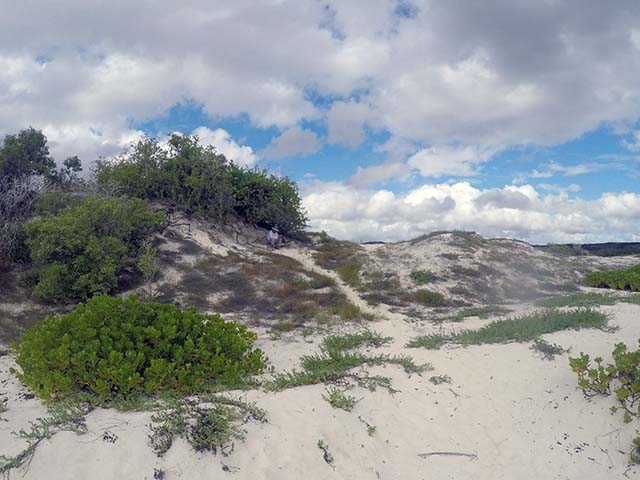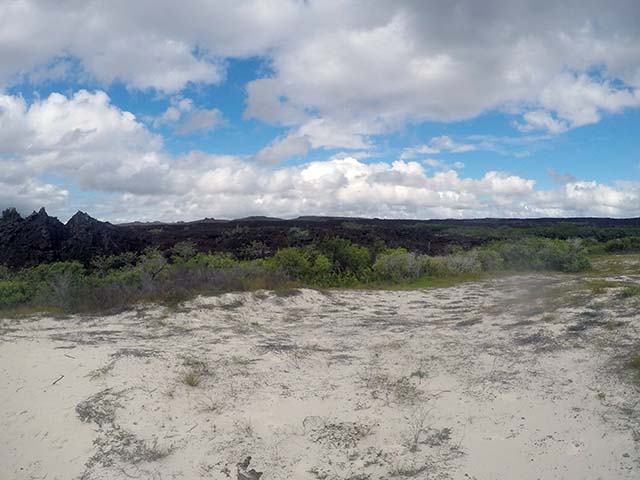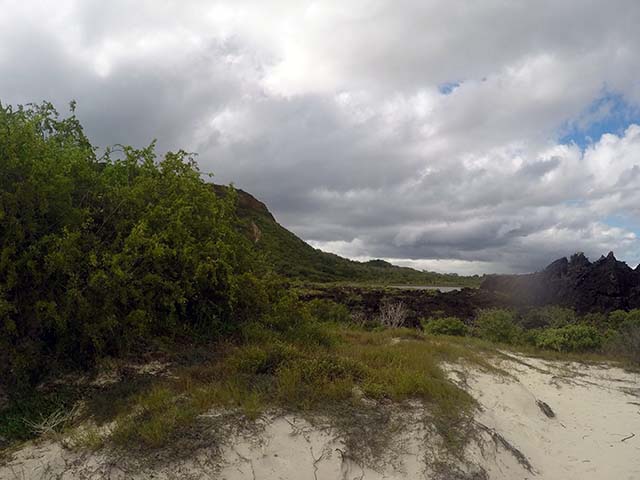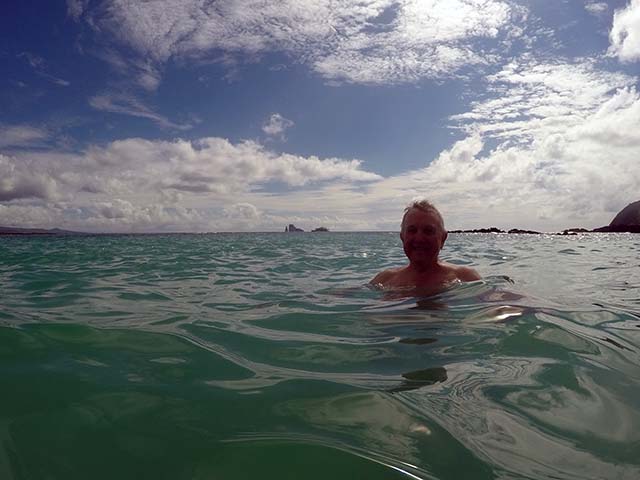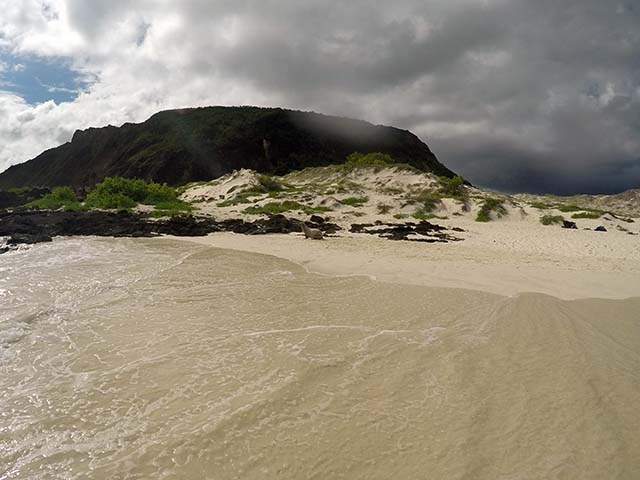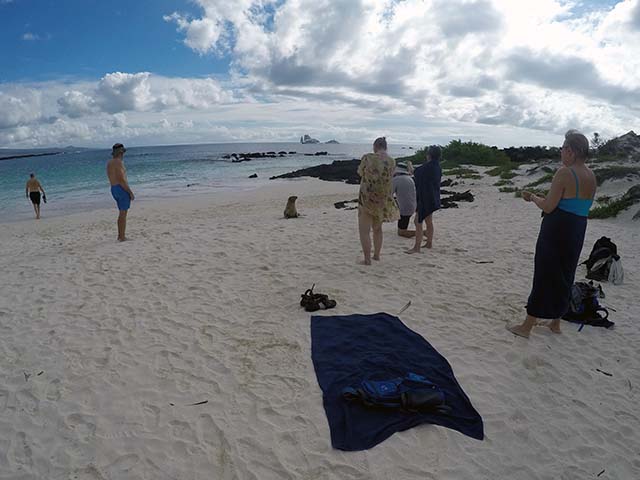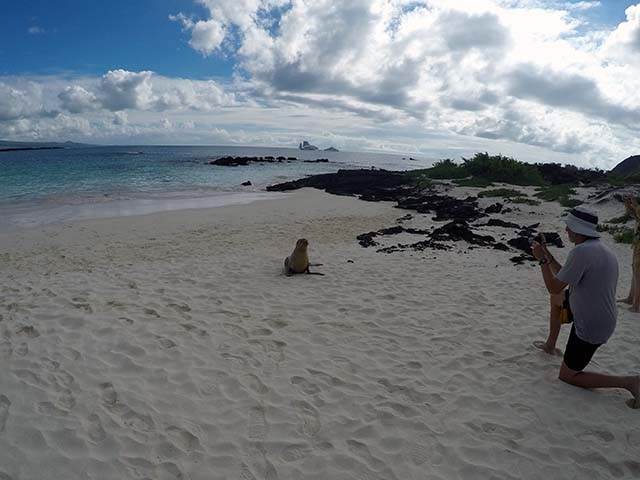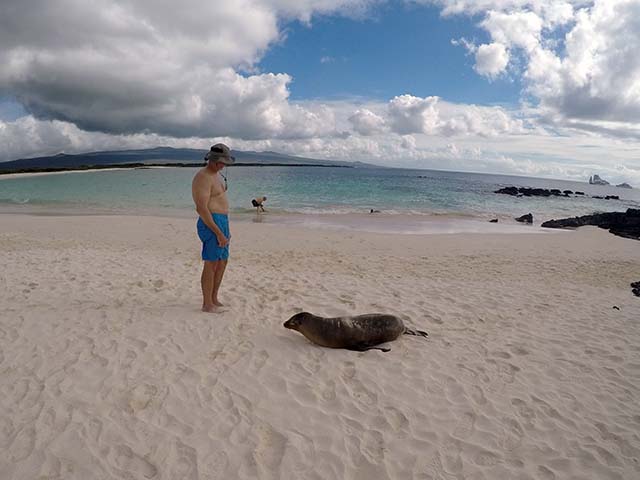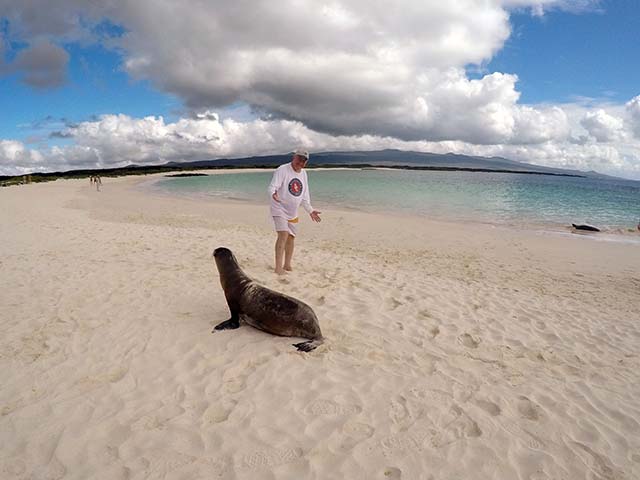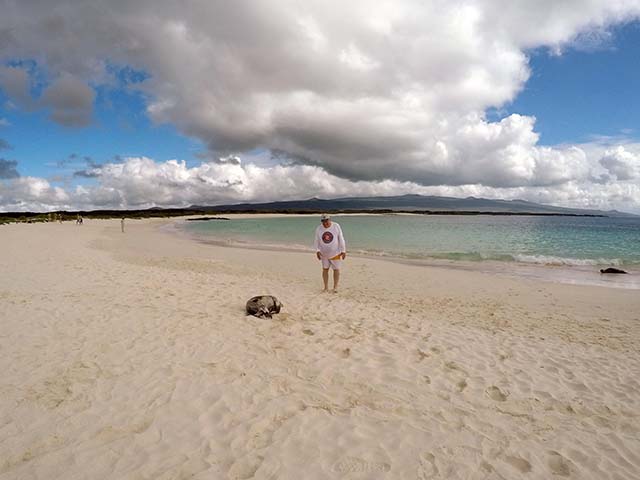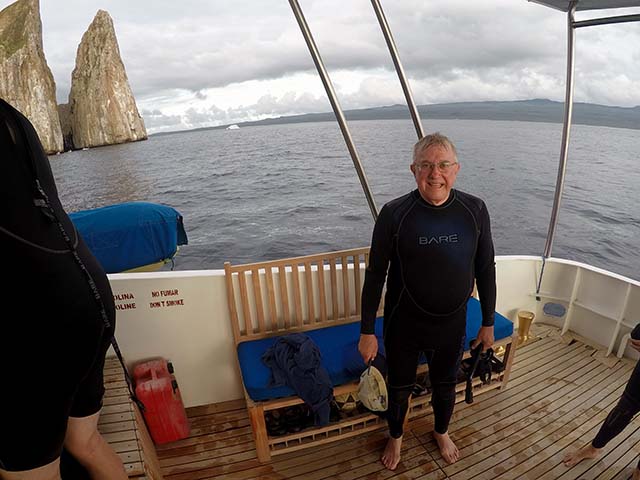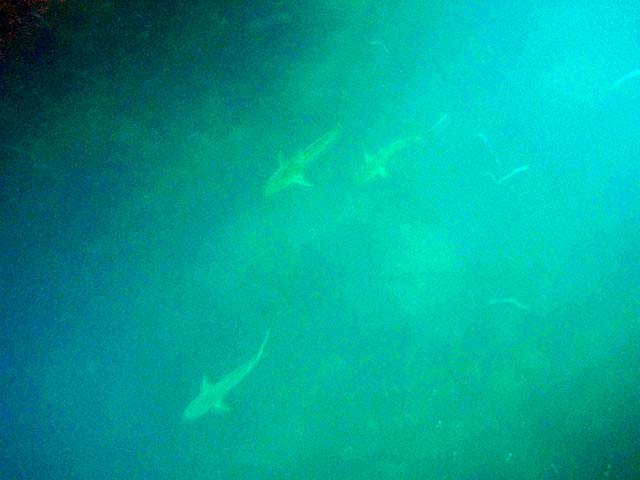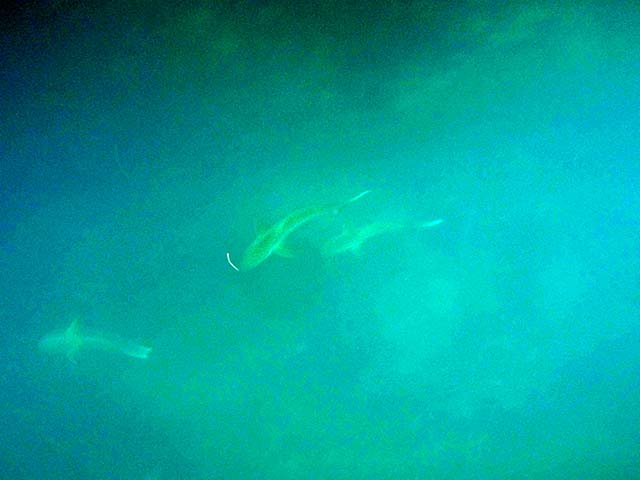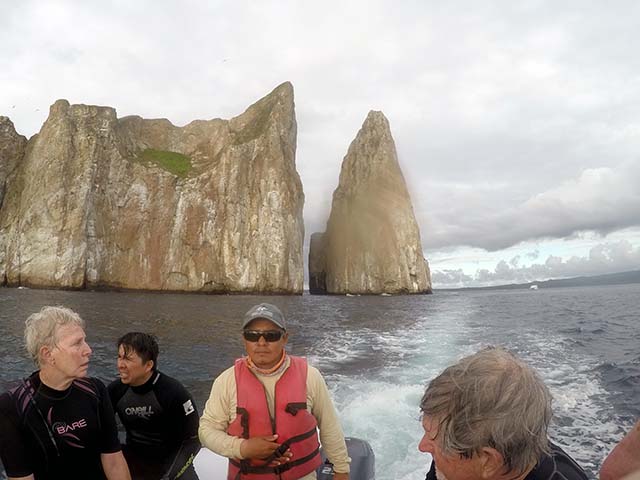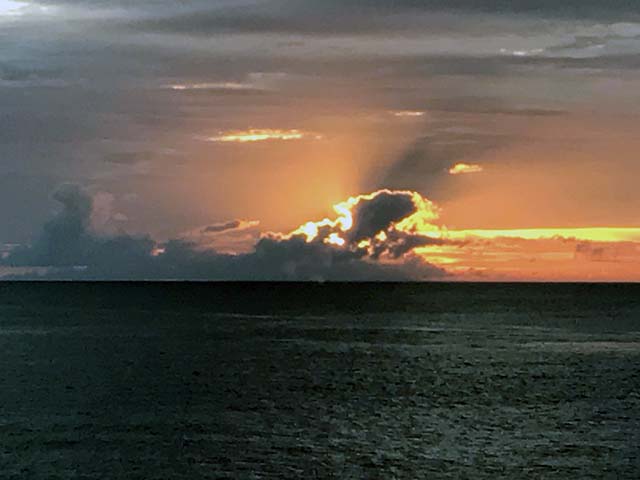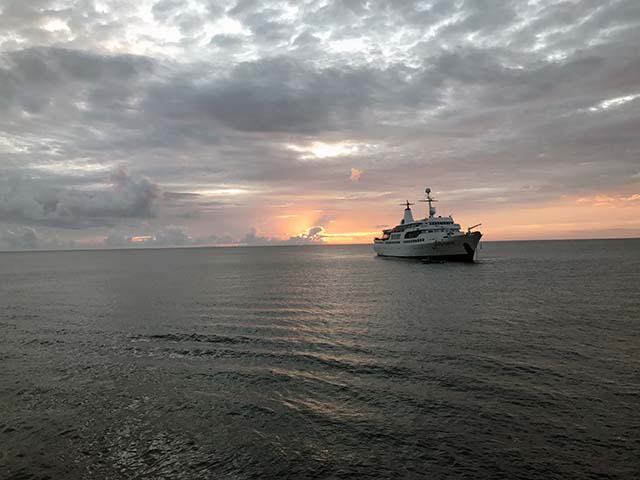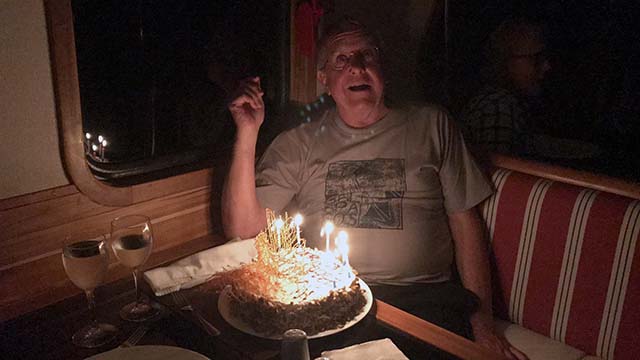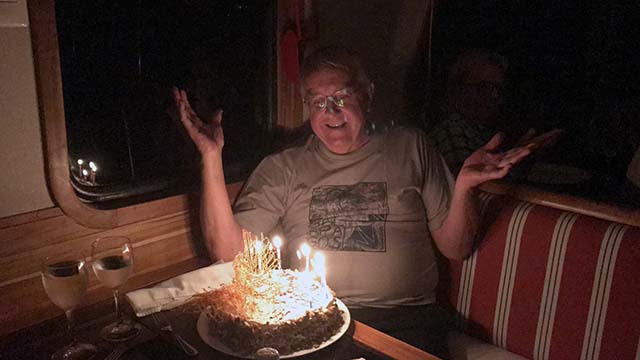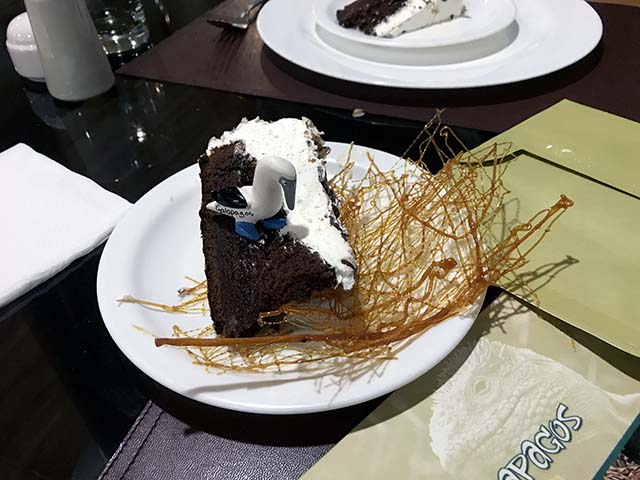|
San Cristóbal Island is one of the Galápagos Islands, part of Ecuador. Puerto Baquerizo Moreno is the capital and administrative centre of Ecuador's Galápagos Province. It is located on the southwestern coast of San Cristóbal, and the town is also nicknamed Cristóbal by the local people, after the island. Its average elevation is 6 metres (20 ft). The central part of the town, including the road to El Progreso, has paved roads. The headquarters of the navy and the national police are located in the town. It has a post office, police station and hospital. A branch campus of Universidad San Francisco de Quito is situated in the town. Located to the south-east of the island of San Cristóbal, La Galapaguera de Cerro Colorado is a tortoise reserve that was built to improve the status population of the island’s tortoises, Geochelone chatamensis. It is located within the area of Cerro Colorado, which is also one of the few places where it possible to see the Calandrinia galapagosa, a plant that is endemic to San Cristobal and is in danger of extinction.
Tortoise numbers in the Galápagos archipelago declined from over 250,000 in the 16th century to around 3,000 in the 1970s and only ten of the original fifteen subspecies survive in the wild. On the island of San Cristóbal there were originally two populations of tortoises; one in the northeast, which remains to this day and currently consists of around 1,400 individuals, and another in the south of the island that became extinct due to the exploitation of the species for meat and oil and the introduction of non-native predators to the islands (such as goats, rats and pigs). Despite ongoing efforts to eradicate the non-native predators, it became necessary to protect the tortoises and specimens from the northeast population were transferred to Cerro Colorado. The reserve now runs a programme to breed the tortoises in captivity before releasing them back into the wild on their ancestral home lands. San Cristóbal tortoises mate once per year and lay between 12 and 16 eggs. The eggs are collected by park rangers and put in a dark box for 30 days and then incubated. The hatchlings are transferred to growing pens, where they remain for two years before being transported to their natural environment. Due to this conservation programme and others like it, it is estimated that the total number of the species exceeded 19,000 at the beginning of the 21st century. Despite this increase, the species is still classified as ‘vulnerable’ by the International Union for Conservation of Nature. The tortoises at La Galapaguera live in semi-natural conditions and visitors may follow interpretive trails through the reserve and see the young tortoises in the breeding pens. These herbivores spend their days grazing on grass, leaves and cactus, basking in the sun and napping for nearly 16 hours per day. A slow metabolism and large internal stores of water mean they can survive up to a year without eating or drinking. The visitors centre also offers talks on the natural history of giant tortoises and the relationship and differences between the tortoises of San Cristóbal and the other tortoises in the archipelago. There is a great amount of variation in size and shape among the Galápagos tortoises, however two main morphological forms exist. The domed carapace, which is most similar to their ancestral form, and the saddle-backed carapace. The domed tortoises tend to be much larger and are generally found on higher and more humid islands, while the smaller saddle-backed tortoises evolved on arid islands as a response to the lack of available food during drought. The San Cristóbal tortoise’s shape is between both species with males having a saddle-backed shape and females and young males being wider in the middle and more domed in shape.
Franklin plans to get us to the Tortoise Breeding Center early, before busloads of nasty old tourists arrive.
We're already anchored in Cristóbal harbor so getting to shore doesn't take long.
Looks like lots of boats are already already anchored in Cristóbal harbor.
The place doesn't look too busy this early, though.
It's mostly just us in town.
Hardly a T-shirt shop open now.
We don't have time to tarry. We'll come back later.
Right now we have to hop on a bus and ride over the mountains, across to the other side of the island to find the big tortoises. Notice how I'm resisting the urge to call them "turtles?"
Up until very recently this Galapagos tortoise breeding center was known as La Galapaguera. In fact, if you want to Google this place, don't even try Centro de Crianza de Tortugas Terrestres David Rodriguez. Sure, you'll find something, but the real info is still under the old name. Mr. Rodriguez, by the way, is a highly respected, long-time keeper at the Center.
The Galápagos tortoise is the most famous and unique fauna of the island, as well as the longest lived of all vertebrates, averaging around 100 years. They are the world’s largest tortoises and the 13th heaviest living reptile with some specimens exceeding 1.5 meters in length and weighing 150 kilograms. Larger tortoises are big enough to carry adult humans on their backs; in 1835 Charles Darwin wrote “I frequently got on their backs, and then giving a few raps on the hinder part of their shells, they would rise up and walk away; but I found it very difficult to keep my balance.”. These giant tortoises once thrived on most of the world’s continents but now the Galápagos tortoise represents one of the two remaining groups of giant tortoises in the world (the other being the Aldabra giant tortoise). The giant tortoise population in the Galápagos archipelago was once so large that the islands were named for these huge reptiles; the old Spanish word galapago meant saddle and was used by early explorers for the tortoises due to the shape of their shells.
Franklin gave us a stern warning about touching both the flora and the fauna in the Center. See that tree with the pretty green fruit? It's called "manicheel." The manchineel tree (Hippomane mancinella) is a species of flowering plant in the spurge family (Euphorbiaceae). It is native to tropical southern North America and northern South America. The name "manchineel" (sometimes written "manchioneel") as well as the specific epithet mancinella is from Spanish manzanilla ("little apple"), from the superficial resemblance of its fruit and leaves to those of an apple tree. A present-day Spanish name is in fact manzanilla de la muerte, "little apple of death". This refers to the fact that manchineel is one of the most dangerous trees in the world. Manchineel is also known as the beach apple. All parts of the tree contain strong toxins, some unidentified. Its milky white sap contains phorbol and other skin irritants, producing strong allergic dermatitis. Standing beneath the tree during rain will cause blistering of the skin from mere contact with this liquid (even a small drop of rain with the milky substance in it will cause the skin to blister). The sap has also been known to damage the paint on cars. Burning the tree may cause ocular injuries if the smoke reaches the eyes. Contact with its milky sap (latex) produces bullous dermatitis, acute keratoconjunctivitis and possibly large corneal epithelial defects. When ingested, the fruit is reportedly "pleasantly sweet" at first, with a subsequent "strange peppery feeling ..., gradually progress[ing] to a burning, tearing sensation and tightness of the throat". Symptoms continue to worsen until the patient can "barely swallow solid food because of the excruciating pain and the feeling of a huge obstructing pharyngeal lump." While the plant is toxic for many birds and animals, the black-spined iguana (Ctenosaura similis) is known to eat the fruit and even live among the limbs of the tree.
Just one of them contains enough poison to kill you and a hundred others. Or something like that. Don't even step on them. You've been warned.
Don't setp on the big guys either. They wouldn't kill you, but Franklin might.
Just a big old friendly saddleback. With lifespans in the wild of over 100 years, the Galapagos tortoise is one of the longest-lived vertebrates. A captive individual lived at least 170 years. Spanish explorers, who discovered the islands in the 16th century, named them after the Spanish galápago, meaning "tortoise". Shell size and shape vary between populations. On islands with humid highlands, the tortoises are larger, with domed shells and short necks; on islands with dry lowlands, the tortoises are smaller, with "saddleback" shells and long necks. Charles Darwin's observations of these differences on the second voyage of the Beagle in 1835, contributed to the development of his theory of evolution. The governor of the islands had told him, "Show me a tortoise and I'll tell you which island it came from just by looking at it." The significance of that observation apparently passed right over Darwin's head at the time, but later, on the voyage home...EUREKA!
Tortoises on the prowl.
Well that's a pretty flower!
It turns out giant tortoise meat is pretty tasty and you can capture them and keep them alive for months and months aboard sailing vessels -- turtle soup tonight, guys? -- so several of the different species were hunted to extinction, or almost in some cases. Well now the Ecuadorian government is working hard to restore populations and tortoises from the various islands are brought here to breed.
Eggs from the carefully controlled breeding program.
Nancy checks out all the babies in the nursery.
Aww...
The older kids are allowed out to play.
And wallow in the mud.
Now back across the mountains on the same old creaky bus. And then ... a brief glimpse of civilization. WiFi! Yay!
The Rock: It's a Hard Place. We'll be back later.
But now we're going beaching again.
Don't even think of suggesting the sand is dirty-looking. It's GREEN, I tell you!
Hmmm...there seems to be a narrow break in the rocks. Don't worry, Ken, even Bill can squeeze through.
After you, Ken.
Ah, that's more like it.
And there's that sticky leaf plant that I'll never completely get out of one of my favorite moonbuggy volunteer T-shirts.
It's a pretty beach, all right.
Guys, can't we just swim here?
Nope, not enough sea lions, I guess.
Surely this will work.
Don't you think? I mean, it's pretty enough, right?
Larry and Ken agree, I think.
OK, this is it. Bill is ready to beach.
His towel is laid out and his backpack is off and his bug spray is applied and ... oh, look.
Classic duct tape sandals. Bill would never have survived this trip without them.
Say, what's behind that natural berm Franklin warned us not to climb. I mean, if he can go up there, why not ask if I can have a look? "OK, he says, "but be quick."
And on the other side is ... a long-ago lava flow.
A vast, impenetrable field of lava flow. Well, how about that?
Bill thinks he'll just go back to the beach.
Beautiful Beach and Swimmers
Ahhh. It's Bill's birthday today and he's having a blast.
More swimmers.
And now that we're in the water, who's that up on the beach?
Another sea lion is getting into the act.
And of course everybody wants a chance to play.
Don't play too close, Larry.
Seriously.
Here, let me show you.
Keep your distance. See?
That's enough for now. Let's go snorkeling. Franklin has promised sharks.
So back to the boat we go and Bill changes once again, for the last time he hopes, into that oh so very tight rubber wetsuit and ....
Franklin was right!
There are, um, several sharks down here in that gap between the little rock and the big rock.
Little Rock, Big Rock. Actually the formation is called "Kicker Rock." And all the action is right in between them. Kicker Rock (a.k.a. León Dormido) is the remains of a volcanic cone that has been eroded by the sea. Above the water, the monolithic rock formation towers over 500 feet above the Pacific Ocean and is home to a number of Tropicbirds, Blue-footed Boobies and Frigatebirds. But, the true appeal of this location occurs below the surface of the sea. The natural erosion of this ancient cone has created a channel between the rocks that provides the ideal habitat to view a variety of sharks and rays including Spotted Eagle Rays, White-tip Reef sharks, the ellusive Galapagos Shark and Hammerheads!
Swimming with Rays, Turtles and Sharks
Well that didn't take long. We wanted to hang out with the sharks lots longer than that, didn't we guys? Didn't we? You know, wiggle our fingers and toes at them? Right?
Kicker Rock is green on its backside.
Our final sunset in the Galapagos Islands was no disappointment.
Pretty. And then later...at dinner...
My Road Scholar companions were just terrific. The Tip Top III crew and Franklin and the Floridians and the Swiss and I dunno, the sea lions were probably outside singing, too.
The Tip Top III chef outdid himself.
Chocolate cake with raspberry sauce and a spun sugar decoration.
Oh, shut up and blow out the candles, Bill. This was a terrific birthday, one he'll never forget. Thanks thanks thanks all of you.
And thanks for the card and the presents and my favorite blue-footed booby, now proudly displayed in a place of honor on my favorite home appliance -- my refrigerator.
What a way to end our cruise in the Galapagos. And to top it all off, Franklin gave a fine speech just before we all hit the sack. There's no way the rest of the trip could be as much fun as this. Right? You think? You're so wrong.
|

